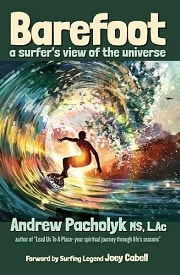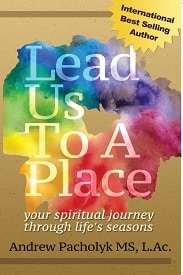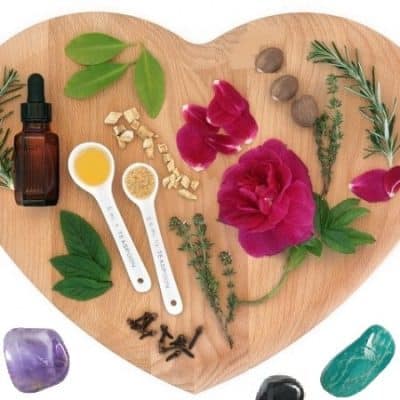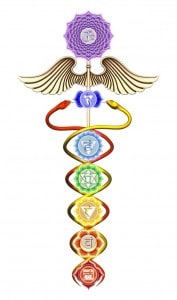 Diabetes
Diabetes
See also anxiety, chinese medicine, detoxing, environment, energy medicine, exercise, food as medicine, high blood pressure, heart health, holistic therapy, pain, stop_smoking, stress, weight loss.
Diabetes is the result of a metabolic disorder in which blood sugar (glucose) levels are above normal. A fasting blood sugar test measures the amount of sugar (glucose) in your blood after you fast for eight hours. Your fasting blood sugar is normal if it’s 70 mg/dL to 100 mg/dL.
If your fasting blood sugar is 100 mg/dL to 125 mg/dL, you may have prediabetes.
A fasting blood sugar value by itself doesn’t help distinguish between type 1 and type 2 diabetes. But a fasting blood glucose of 126 mg/dL or higher is consistent with either type 1 or type 2 diabetes when accompanied by classic symptoms of diabetes.
Symptoms of diabetes include increased thirst or hunger, frequent urination, weight loss or blurred vision. Your doctor may repeat this and other tests on a different day to confirm their diagnosis. Complications from diabetes include serious heart complications, loss of limb, kidney failure and blindness.
Diabetes mellitus (sugar diabetes) is an inherited disorder of metabolism that comes in two distinct forms: type I (juvenile-onset) and type II (adult-onset).
Type I (juvenile-onset) begins in childhood or adolescence, is more severe, requires regular injections of insulin to prevent death, and is an autoimmune disorder. The goal of juvenile-onset diabetics should be to reduce their insulin requirement to a minimum while maintaining the best possible health, especially of the cardiovascular system, through attention to diet, exercise, and stress reduction.
Type II (adult-onset) older adults, is less severe, not autoimmune in origin, and often can be controlled by maintaining normal weight and eating sensibly or by taking oral medication. The goal of adult-onset diabetics should be to avoid insulin shots and other prescribed medication altogether, keeping the disease in control by adhering to a healthy lifestyle.
Insulin-dependent diabetics are not as likely to be able to get off insulin completely and should never attempt to do so on their own, although they may be able to reduce their insulin requirement through natural therapies and lifestyle modification.
Insulin is produced in the Islets of Langerhans (in the pancreas) and is a polypeptide hormone that regulates carbohydrate metabolism. Apart from being the primary effector in carbohydrate homeostasis, it has effects on fat metabolism. It can change the liver’s ability to release fat stores. Insulin’s concentration (more or less, presence or absence) has extremely widespread effects throughout the body.
Insulin is used medically in some forms of diabetes mellitus. Patients with type 1 diabetes mellitus depend on exogenous insulin (commonly injected subcutaneously) for their survival because of an absolute deficiency of the hormone. Patients with type 2 diabetes mellitus have either relatively low insulin production or insulin resistance or both, and a small fraction of type 2 diabetics eventually require insulin when other medications become inadequate in controlling blood glucose levels.
FACTS
1. Diabetes affects millions and millions of people in the United States according to the American Diabetes Association.
2. Heart Disease is the leading cause of diabetes – related deaths.
3. Approximately 73% of adults with diabetes have high blood pressure and or use prescription medications for hypertension.
4. Diabetes is the leading cause of new cases of blindness among adults 20 – 74 years old.
5. Nutrition can play a vital role in people with diabetes, especially for those with adult onset diabetes ( type 2 diabetes).
6. Mexican-Americans are almost twice as likely and non-Hispanic blacks are almost 50% more likely to develop diabetic retinopathy as non-Hispanic whites.
7. About 60% to 70% of people with diabetes have mild to severe forms of nerve system damage.
8. More than 60% of non-traumatic lower limb amputations occur in people with diabetes.
9. In 2002, 44,400 people with diabetes began treatment for end-stage renal disease.
10. A total of 153,730 people where living on chronic dialysis or with a kidney transplant.
Body awareness is very important in managing diabetes. See you doctor regularly. Signs and symptoms can arise that may seem completely unrelated, when in fact they could be. Do not allow your pride or ego to get in the way of your physical health.
1. Proper eye care should be maintained. If any changes in vision, sudden loss, dizziness, blurring or pain in or around the eyes occur, see your doctor right away. Retinopathy, eye infections and blindness are more common in diabetics. Eye Exam: Dilated eye exam – yearly.
2. Thyroid problems are more common with diabetes. Tell you doctor if swelling or pain around the neck or throat occur.
3. Lung infections, pneumonia and influenza are more common in diabetics. If you are a smoker, quit now!
4. Heart disease is a major cause of death in diabetics. Tell your doctor if you are experiencing weakness, shortness of breath, swelling, dizziness, palpitations, or other sensations in the chest. Blood pressure: each regular diabetes visit.
5. Bladder infections and other bladder issues can be due to complications from diabetes. Urine Test: Microalbumin measurement – yearly (based on the HEDIS Diabetes Criteria).
6. Kidney failure is the lead cause of death among diabetics. Nephropathy is caused by blood vessel damage, which disrupts the kidney’s filtering system. Ask your doctor what you can do to reduce the risk.
7. Foot care is most important. Exam you feet daily. Notify your doctor if you have ANY signs of tingling, sticking, sharp, stabbing or dull pain. Also if you have unexplained pain, spots or loss of normal sensation. Neuropathy or nerve damage is a particular trait of diabetes. Problems can often occur at the big toe. Foot ulcers, if left untreated, can infect the bone and lead to amputation. Foot Exam: Check feet at each regular diabetes visit Comprehensive foot exam – at least yearly (more often in patients with high risk foot conditions).
8. Loss of sexual function. High blood pressure, heart disease and issues of circulation can effect nerves. Damage can occur, which can inhibit orgasm. Infection, vaginal dryness in women or erectile dysfunction in men can all be complications from diabetes.
9. Peripheral nerve damage can occur anywhere, but particularly at the joints and extremities.
10. Take your readings as much as possible! Keep a watch on hemoglobin A1c and blood fats to see if eating more sweets leads these number on an unhealthy up swing. There are three distinctly different times of day to consider testing blood sugars. First thing in the morning, before meals, and after meal blood sugar numbers can each reveal a wealth of information to help solve the mystery of blood sugar numbers. Blood Test: A1c (glycosylated hemoglobin) At least 2 times a year if stable Quarterly, if treatment changes or you are not meeting your goals.
11.Keep your blood fats in target range such as total cholesterol, LDL, HDL and triglycerides.
12. Pay attention to good hygiene and skin care. Eat a proper balance of nutritionally low GI foods. Weight: Each regular diabetes visit.
Most people who have diabetes know they should be testing their blood sugar on a regular basis. However, many of them do not realize what the numbers mean and simply go through the motions of testing. Without realizing when to test and how important these numbers actually are.
First thing in the morning is known as a FASTING blood sugar. It should be taken soon after rising; before food, drink, exercise, or medications of any kind.
Normal is less than 100. Goal is 70 – 115
A before meal blood sugar is known as PREPRANDIAL. This means before lunch or before supper. At this point in your day, you’ve usually had something to eat and drink, you’ve usually had some activity or exercise, and you’ve probably taken some type of medications. All these things can effect your blood sugar numbers. This is different than a FASTING blood sugar test taken before breakfast, medications, or exercise.
Normal is less than 100. Goal is 100 – 120
An after meal blood sugar is known as POSTPRANDIAL and means after a meal. Timing is important on this reading because it should be taken 1 – hours to 2 hours after a meal.
Normal less than 140. Goal less than 160
The Glycemic Index
Not all carbohydrate foods are created equal, in fact they behave quite differently in our bodies. The glycemic index or GI describes this difference by ranking carbohydrates according to their effect on our blood glucose levels. Choosing low GI carbs – the ones that produce only small fluctuations in our blood glucose and insulin levels – is the secret to long-term health reducing your risk of heart disease and diabetes and is the key to sustainable weight loss.
Glycemic Index Range
Low GI = 55 or less
Medium GI = 56 – 69
High GI = 70 or more
Glycemic Load Range
Low GL = 10 or less
Medium GL = 11- 19
High GL = 20 or more
Glycemic Load Per Day
Low GL < 80
High GL > 120
Foods with a high GI score contain rapidly digested carbohydrate, which produces a large rapid rise and fall in the level of blood glucose (this is not good). In contrast, foods with a low GI score contain slowly digested carbohydrate, which produces a gradual, relatively low rise in the level of blood glucose (this is good).
“Andrew’s Best Remedies”
-

Acidophilus Pearls
$ 16.95 -
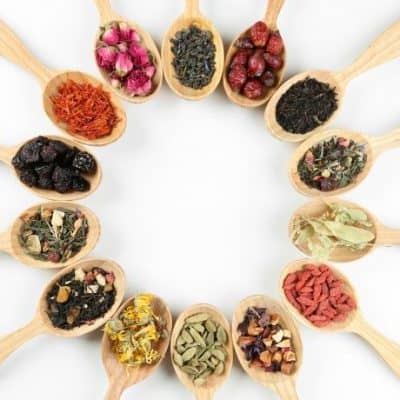
AromaThera-Teas by the Pound
$ 29.95 -
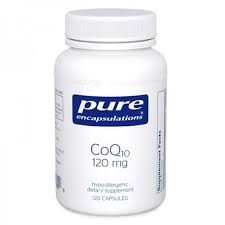
Coenzyme Q10
$ 59.95 -
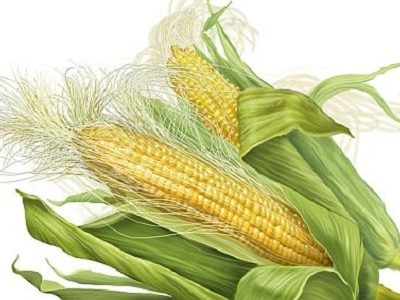
Corn Silk Tincture
$ 19.00 -
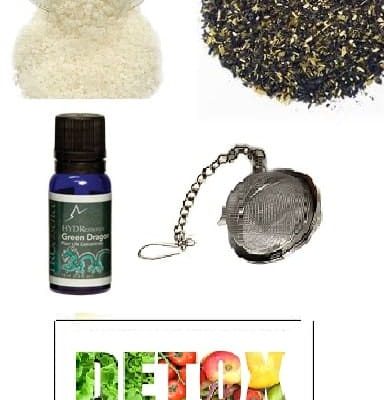
Detox Complete System
$ 49.95 -
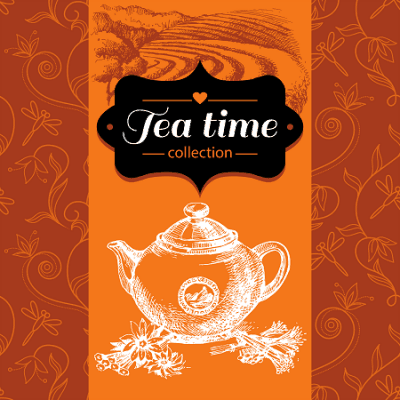
Diabetic Care Herbal Tea Bags
$ 9.95 -
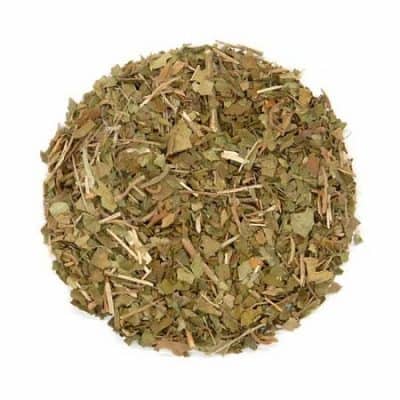
Diabetic Tea
$ 8.95 -

Digestive Enzymes Ultra
$ 38.00 -

Flaxseed Oil Gel Caps
$ 19.95 -
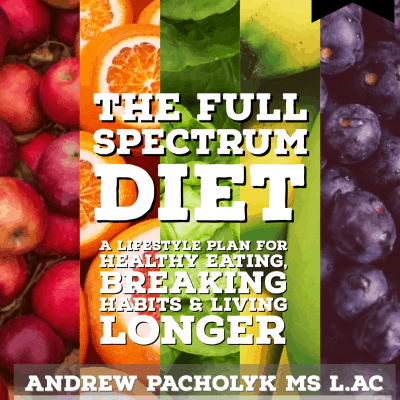
Full Spectrum Diet and Kit
$ 39.95 -

G.I Detox 60 caps
$ 31.95 -
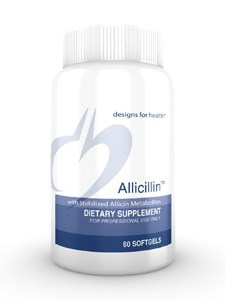
Garlic Allicillin™ 60 gels
$ 29.95 -

GI Fortify
$ 39.95 -
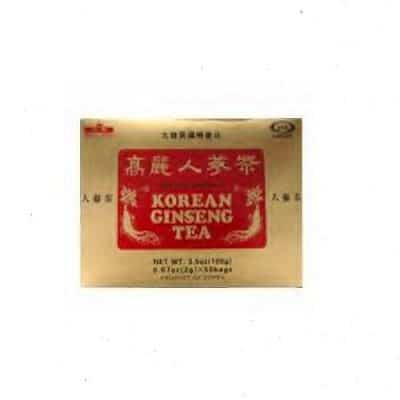
Ginger Tea Granules
$ 8.95 -

Gluten/Dairy Digest
$ 38.00 -
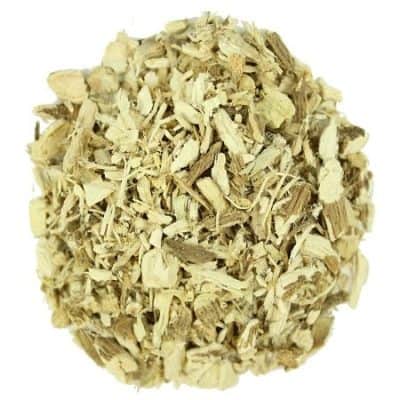
Marshmallow Root Tincture
$ 19.00 -
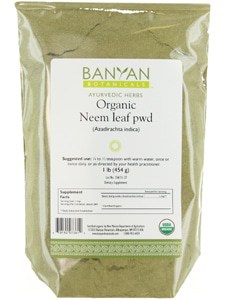
Neem Powder 1/2 lb (Certified Organic)
$ 19.95 -
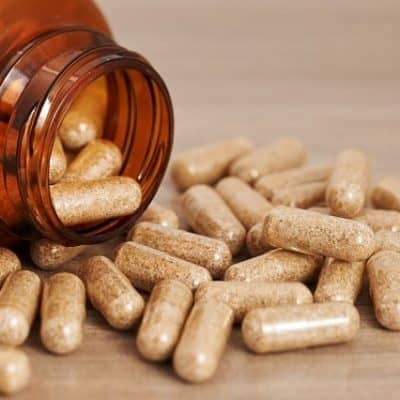
Reishi Mushroom Capsules
$ 42.00 -
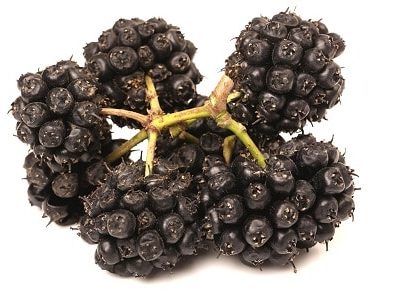
Siberian Ginseng Tincture
$ 19.00 -
Sale!
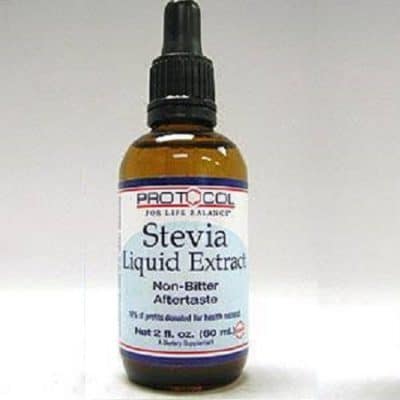
Stevia Liquid Extract
Original price was: $ 14.00.$ 11.95Current price is: $ 11.95. -
Sale!

Stop Smoking Kit
Original price was: $ 49.95.$ 44.95Current price is: $ 44.95. -
Sale!
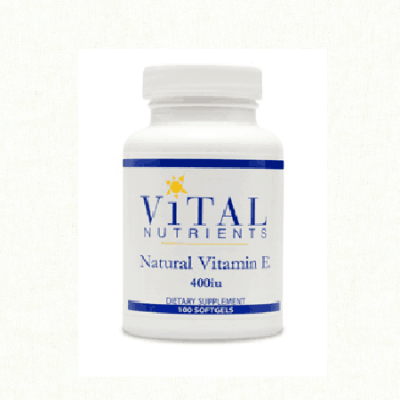
Vitamin E
Original price was: $ 21.95.$ 19.95Current price is: $ 19.95.
Nutrition for Diabetes
Experiment actively with diet, with the frequency and size of meals, and with all aspects of lifestyle to lower the amount of insulin required. This means taking on a lot of responsibility for your own health. A task you can absolutely achieve.
Full Spectrum Diet Suggestions: Avoid the White color group
-Use breakfast cereals based on oats, barley and bran
-Use breads with whole grains, stone-ground flour, sour dough
-Reduce the amount of potatoes you eat
-Enjoy all other types of fruit and vegetables
-Use Basmati, Doongara or Japanese koshihikari rice
-Enjoy whole grain pasta, whole grain noodles, quinoa
-Eat plenty of salad vegetables with a vinaigrette dressing
-Incorporate good fats like nuts and olive oil
-It is ok to use low-fat dairy foods, in the morning
– Note: these red-orange foods (Watermelon, Carrots, Cantaloupe) are in the med-high GI range.
-See Vitamin/Supplements for Everybody
Incorporate these wonderful herbs to enhance the flavor of all your foods: billberry, basil, chives, cinnamon, dill, fenugreek, garlic, ginseng (Panax, Korean, American) oregano, parsley, rosemary, stevia, thyme.
Blood sugar regulators include: alanine, banaba, beta-glucan, bitter melon, chromium piccolate, guggul, gymnema, rehmannia.
Water is essential in any healing process. Distilled water is the best. 6-8 eight ounces glasses per day. Try not to drink liquids that contain caffeine or alcohol.
A diet combined with both insoluble fiber (fiber that doesn’t dissolve in water) will keep most people regular. You get fiber from eating lots of vegetables, wheat bran, whole-grain breads and cereals and fruit.
An apple can regulate blood sugar levels. Apples contain naturally-occurring chemical compounds known as phytochemicals, polyphenols, or flavonoids, some of which have been proven to have antioxidant activity that inhibits, or scavenges, the activity of free radicals in the body. Cell damage from free radicals can be a factor in certain cancers, heart disease, strokes, and other conditions. The major antioxidant components in apples are polyphenols contained mainly in the skin known as quercetin glycoside, phloretin glycoside, chlorogenic acid, and epicatechin.
Best fruit choices for diabetics: fruits belong to berry family are good choice for diabetics as these are considered to be diabetic friendly. Blueberries, boysenberries, raspberries, cranberries, strawberries all help to control insulin levels, improve liver function and maintain blood glucose levels. Including one cup of any of these berries is sufficient to control diabetes each day. By including half cup of grapefruit every day, this can also help to stabilize blood glucose levels. Fruits belong to cherry family are also healthy options for diabetics. At least 10 to 12 cherries are sufficient per day to control glucose levels in the blood. Pears, peaches and grapes aree low in the glycemic index, rich in potassium, fiber, Vitamin C and Vitamin A and are also great choices for diabetics.
Extend your nutrient throughout the day with three main meals and three snacks. Small portions or servings as opposed to one or two “gorged meals” not only reduces blood glucose and insulin concentrations, but also guards against the development of hyperglycemia. Consumption of fiber rich foods,barley, carrots, oats, legumes, beans, onions, peas, and lentils, have been associated with improved blood glucose control, and are better for long term use than soluble fiber supplements such as guar, pectin, and locust bean gum.
Research has discovered a whole range of plants with hypoglycemic action. Among them are artichoke, banana, barley, cabbage, carrot, lettuce, nettles, oats, peas, spinach, sweet potato, and turnip.
Managing Your Lifestyle Choices
Lifestyle factors include situations that occur during our lifetime based on our choices, such as smoking, chemical dependency, obesity, type 2 diabetes and dietary choices. Of course it is never just one factor that is an indicator of this change, but a host of factors accumulating over a lifetime. Many times, the symptoms from the aging process are confused with symptoms of poor gut health.
In general, symptoms associated with the aging process include: weight gain, change in sleep patterns, hearing loss, a rise in blood pressure and/or high cholesterol. With age, several of our bodily functions slow down and that includes our digestive tract. As we age, the muscles in the digestive tract become weaker, more stiff and less efficient. The tissues are more likely to become damaged because new cells aren’t forming as quickly as they did when we were younger. Our body makes enzymes called metabolic enzymes. These enzymes are responsible for every action that takes place in our body including digestion. The enzyme makeup in the body includes protease, which breaks down protein, amylase, which breaks down carbohydrate and starch, and lipase, which breaks down fat. These three enzymes break down the majority of the types of food we eat. Also, lactase, which breaks down lactose (dairy), maltase and sucrase, which breaks down food sugars, as well as cellulase, which breaks down cellulose, which is needed by those with food allergies.
Gastroparesis is a disorder in which food takes a long time to clear the stomach, resulting in many unpleasant symptoms.
Artery blockages can affect blood flow to the bowels, a condition called intestinal ischemia during which blood flow to the intestines decreases in a similar way to what happens with a heart attack. More systemic problems that are more common with age are really the reason for digestive tract issues.
Here are some of the digestive tract problems that can occur as we get older:
-gas
-heartburn
–peptic ulcers
–diarrhea
-constipation
-hemorrhoids
-irritable bowel syndrome
–diverticulitis
Herbal Remedies
Ampalaya (Momordica charantia), also known as bitter melon is an herb that has long been known in as one of the best anti-hyperglycemic herbs and has proven itself beyond doubt as effective against diabetes. Ampalaya has a potent mix of flavonoids and alkaloids that are believed to make the pancreas either produce more insulin, make the body more sensitive to insulin already produced, and/or generate new beta cell populations at the Islets of Langerhans.
Banaba (Lagerstroemia speciosa), is now gaining momentum and widespread acceptance, even in the western medical circles. Medical research and clinical trials performed on this miraculous herb show that Banaba possesses the powerful compound corosolic acid that lends itself to the treatment of diabetes.
Billberries are rich in flavonoids, the pigment that gives plants their color and is very beneficial for treating diabetes. Billberries are help retinopathy and micro vascular abnormalities. It strengthens capillaries in the body and protect them from damage. Since complications of long-term diabetes include damage to the small blood vessels in the eyes, kidneys, and tips of the toes and fingers, bilberry is often recommended.
Fenugreek Seed has been shown to reduce glucose levels in type 2 diabetes and may help do so in type 1 (insulin dependent) diabetes. Modern research indicates that fenugreek seeds not only lower blood glucose, but also reduce insulin levels, total cholesterol, and triglycerides, while increasing HDL (the “good” cholesterol). Fenugreek seeds contain 50 percent fiber, which serves to slow down the rate at which food is emptied from the stomach. This delays absorption of glucose by the small intestine, resulting in lower blood sugar.
Ginkgo Biloba extract protects the vascular lining and improves blood flow to the extremities. Beneficial to treat and prevent neuropathy and foot ulcers.
Ginseng (Panax, Korean, American) has been shown to moderate levels of blood sugar (glucose). Ginseng improves the ability of insulin to properly regulate in our system. Because it is an adaptogen, this allows ginseng to help the body cope with all sorts of adverse conditions.
Grapeseed extract is a systemic antioxidant that can help guard against retinopathy and high blood pressure.
Gymnema (Gymnema sylvestre) This Ayurvedic remedy is one of the most common herbs used in the treatment of both Types 1 and 2 diabetes. Gymnema appears to stimulate the pancreas, prompting it to produce more insulin. Gymnemic acid, a constituent of the herb, acts directly on the tongue receptors (taste buds), blocking their ability to sense sweetness.
Hawthorne Berry are flavonoids rich and help retinopathy and micro vascular abnormalities. They are used in maintaining good heart health and stabilizing blood pressure.
Stevia is a South American shrub whose leaves have been used by native people in Paraguay and Brazil to sweeten their stimulant beverages. Stevioside, the main ingredient in stevia, has no calories but has actions similar to several currently used medications. It stimulates the release of insulin and normalizes the response to glucose, especially in type 2 diabetes.
Herbal Combinations and Formulas
Herbal tinctures are concentrated liquid extracts of the medicinal properties of herbs. Tinctures represent one of many different ways to prepare and use herbs. The terms tincture and extract are often used interchangeably.
Shake the tincture bottle well. As a dietary supplement, place 1 to 3 droppers (under the tongue, or in juice or water as needed, 2-3 times a day.
Brain Food Ginkgo, Gota Kola, Blessed Thistle, Siberian Ginseng.
Blood Purifier Pau D’ Arco, Red Clover, Yellow Dock, Burdock, Sarsaparilla, Dandelion, Cascara Sagada & Buckthorn.
Ginseng Energy American, Korean, Siberian & Tienchi Ginseng.
Nerve Strength Alpha Lipoic Acid.
Top 10 Herbal Remedies
Herbal medicine is a wonderful preventative solution. Complications can arise when taking herbal medicine and allopathic drugs your doctor has prescribed. Great caution should be used especially if you are on blood thinners, diuretics or any other heart related medication. Consult your doctor with any questions you may have, before taking additional herbs or supplements.
1. Cardamom, warms up the digestive tract, speed up and increase the thoroughness of digestion, and reduce gas.
2. Cinnamon Cassia: In Ayurveda, this warming spice reduces vata and kapha and is traditionally used in cold formulas, regulates blood sugar and is used for strengthening digestion. Cinnamon is a useful remedy for sluggish digestion. The German Commission E recommends it for loss of appetite, dyspeptic complaints, bloating and flatulence.
3. Fennel Seed: Foeniculum vulgare is a common spice that is traditionally used to improve digestion and absorption without increasing pitta. The seeds are also chewed after meals to freshen the breath and alleviate gas.
4. Flaxseed Oil is an edible oil derived from the seeds of the Flax plant (Linum usitatissimum) and is one of the best plant sources of the Omega-3 fatty acid Alpha-Linolenic Acid available. Naturally occurring constituents in Flaxseed Oil may help to balance the production of prostaglandins and support cardiovascular and bowel health.
5. Ginger Root: In Chinese Medicine and Ayurveda it is used as a general panacea that is especially useful for digestive and respiratory complaints. Also dispels nausea and acts as a diaphoretic. Ginger is a time-tested digestive remedy for stomach upset. European practitioners also use ginger in tea for indigestion. It reduces spasms and increases the secretion of digestive juices, including bile and saliva. Ginger contains ingredients that soothe the gut and aid digestion by increasing peristalsis that moves food through the intestine. Use 1 teaspoon of the chopped root brewed as tea, three times a day.
6. Licorice root (Glycyrrhiza glabra) guards digestive mucous membranes by increasing the production of mucin, a secretion that protects gut linings against stomach acid and other digestive juices. Deglycyrrhizinated licorice root (DGL) removes the glycyrrhizic acid (the ingredient in licorice root associated with the possibility of increasing blood pressure and water retention). The soothing part of the root, however, remains intact in DGL. Use 1 teaspoon of the chopped herb brewed as tea, three times a day, or 1 to 2 chewable wafers of DGL (250 to 500 mg) 15 minutes before meals and one to two hours before bedtime.
7. Parsley Leaf: Natural diuretic, parsley helps eliminate wastes and lessen water retention, which can aid in weight loss. Its high enzyme content improves digestion of proteins and fats and absorption of nutrients. Parsley is a natural breath freshener.
8. Peppermint: is a well-known digestive herb for easing tummy troubles. Enteric-coated peppermint oil capsules work well to prevent dyspepsia. Peppermint oil is a relaxant for the muscles of the intestinal wall. The essential oil can be massaged over the belly to relieve spasms. Take 1 teaspoon the liquid tincture or the dried leaf, brewed as tea, three times a day, or 0.2 to 0.4 ml of an enteric-coated capsule three times a day.
9. Triphala: This formula cleanses the entire GI tract, supporting digestion and gently maintaining regulartity. Considered in Ayurveda to be general panacea for all doshas, it is also used to support weight management, improve the complexion and strengthen the urinary tract.
10. Turmeric: A traditional Indian cooking spice that improves digestion and purifies the blood. Believed to act as a natural antibiotic and antiseptic.
Top Diabetic Supplements
This is one of my favorite areas and should be differentiated for our specific purposes. For overall diabetic maintenance it is important to maintain optimum balance. This can be done by the following:
Alpha Lipoic Acid is a unique antioxidant that is both water and fat soluble, which allows it to enter all parts of the cell to neutralize free radicals. Alpha Lipoic Acid contributes to and is important for the production of energy inside the cell by utilizing sugar to produce energy contributing to mental and physical stamina, reducing muscle fatigue and neutralizes free radicals. Alpha Lipoic Acid recycles and enhances the effects of both Vitamin C and Vitamin E.
Chromium is a trace element that seems to help insulin work properly. research on the mineral for a 1998 article in the Journal of the American College of Nutrition and found at least 25 studies suggesting that it can benefit diabetes patients. Start with 200 micrograms of chromium three times per day, and then reducing the dose to twice per day if blood sugar levels improve.
Folic Acid is essential for the synthesis of adenine and thymine, two of the four nucleic acids that make up our genes, DNA and chromosomes. Diabetes patients tend to have high homocysteine levels and folate is especially important for them. Folic acid needs the catalysts vitamins B12 and B6 to carry out its functions effectively it is usual to supplement with a combination of the three. Dosage recommendations for folic acid vary between 0.4 mg/day and 10 mg/day or more depending on the severity of the deficiency and the health problem to be overcome. The RDA for adults is now 0.4 mg/day and 0.6 mg/day for pregnant women. Recommendations for vitamin B12 generally range from 0.5 to 1.0 mg/day and for vitamin-B6 from 10 to 250 mg/day.
Guggul (gum guggul) is a resin produced by the mukul mirth tree. Guggulipid is extracted from guggul and contains chemicals called “plant sterols” (guggulsterones E and Z), which are believed to be active in the human body. Guggul is a resin known to increase white blood cell counts and possess strong disinfecting properties. A wide range of actions makes this plant very helpful not only in protecting against the common cold, but also in various skin, dental and ophthalmic infections. In addition, Guggul has long been known to lower cholesterol and triglycerides, while maintaining or improving the HDL to LDL ratio. Guggul helps to improve insulin function. Standard guggul extracts contain 5% guggulsterones, which tanslates to a dose of 500mg three times a day.
Omega-3 : This fish oil has been shown in many studies, to reduce your bad cholesterol levels and reduce plaque buildup in your blood. By reducing your bad cholesterol, you are helping your body to fight off stress and relieve anxiety, tension and even prevent heart disease! Fish that are high in Omega-3 are excellent ways to help your blood stream.
Pycnogenol Pycnogenol ® is the patented trade name for a water extract of the bark of the French maritime pine ( Pinus pinaster ssp. atlantica ), which is grown in coastal south-west France. Pycnogenol, contains oligomeric proanthocyanidins (OPCs) as well as several other bioflavonoids. Preliminary human data suggests that supplementation of Pycnogenol with conventional diabetes treatment may lower glucose levels and improve endothelial function.
Quercetin is a flavonoid that has been shown to promote insulin secretion are a very potent inhibitors of glycation and sorbitol accumulation. Consider an apple.
Vitamin C acts primarily in cellular fluid. Vitamin C scavenges free radicals and cleans up waste products. In addition to its anti-oxidative activities, vitamin C benefits many other body functions. Vitamin C is necessary for the synthesis of collagen, which is an important component in the structural make up of blood vessels, tendons, ligaments, and bone. Vitamin C also plays an important role in the synthesis of the neurotransmitters and norepinephrine. Neurotransmitters are critical to brain function and are known to affect mood. Vitamin C, even in small amounts, can protect molecules in the body, such as proteins, lipids, carbohydrates, and nucleic acids (DNA and RNA) from damage by free radicals. Vitamin C helps in the fight against free-radical formation caused by pollution and cigarette smoke and also helps return vitamin E to its active form.
Vitamins B6,12 Foods rich in the B vitamins, which help regulate metabolism, are also beneficial, as diets high in sugar tend to burn these vitamins at a faster rate. These foods include wheat germ, yogurt, and liver.
What You Should Avoid:
Limit foods that have little or no fiber such as ice cream, cheese, meat, snacks like chips and pizza, and processed foods such as instant mashed potatoes or already-prepared frozen dinners. Too much white flour and refined sugar.
What you don’t eat may be even more important than what you do eat. Avoid alcohol, caffeine and sugar, because they tend to worsen index levels. If you can’t avoid them, then at least cut down.
Reduce Processed and Refined Foods:
Avoid fried foods, white pasta, white rice, full fat dairy, white potatoes, white bread (baguettes, bagels, pita).
Processed food can rob your food of nutrients and vitamins that your body needs to fight off stress and promote good health. Try to buy whole foods, unprocessed foods and try and stay away from “instant” foods, preservatives, artificial flavors, saturated fats, refined foods, hydrogenated food and MSG.
Reduce Sugar Intake:
Too much sugar can rob our body of essential nutrients. Simple carbohydrates from baked goods, pastries, most crackers and cookies must be limited to a very small portion or completely removed from the diet.
Herbal Teas
In a stainless steel pot, boil desired amount of water. The moment it boils turn the heat off. Add the following herbs in an infuser, muslin bag or tea ball for a single cup or add one-three teaspoons of herbs per cup for larger amounts.
Allow the herbs to infuse for up to 5 minutes. Drink 3-4 cups a day. For flavor-add lemon and sweeten with Stevia or organic honey. These herbs are helpful for gently cleanses, purifying, detoxing, anti-inflammatory. This powerful formula will help remove accumulated toxins in the body. Strong antioxidant, cleanses the colon and stimulates circulation.
Calm Tea– Relaxing blend of herbs to help reduce stress and helps you to unwind. Improves circulation and acts as a sedative. Reduces mucous from colds, muscle and menstrual cramps and helps with anxiety and stress. Chamomile Flower, Peppermint Leaf, Catnip Leaf, Strawberry Leaf, Linden Leaf and Flowers, Passion Flower Herb, Scullcap, Licorice Root, Valerian Root.
D-Tox Tea – Rosehips, Red Clover, Ginger, Nettle, Alfalfa, Dandelion, Goldenseal Leaf, Echinacea, Pan D’Arco, Burdock, Clove, Stevia.
Digestive Tea– Demulcent herbs especially blended for gas, diarrhea, and ulcers. Helps soothe an upset stomach. Helps in digestion and is good for heartburn, indigestion, circulatory problems, and nausea. Peppermint, Papaya Leaf, Hibiscus, Mint.
Diabetic Tea – This powerful formula will help digest sugar and assist the pancreas in production of insulin. Gymnema sylvestre suppresses the taste of sugar. It has come to be known as “destroyer of sugar”. Clinical tests have shown that regular use over a period of three to four months helps to reduce glycosuria, or the appearance of carbohydrates in urine. Gymnema sylvestre herb, Stevia.
Gunpowder Green Tea – Green tea is a non-fermented tea which retains the freshness of tea leaves. Green tea is characterized by its green color, delicate aroma, mellow taste and beautiful shape. If green tea is made in a glass, people can appreciate the beautiful dancing of the tender tea leaves and buds. Green tea is tender and delicate. Gunpowder tea is astringent and mildly bitter and you can add a very small pinch of Stevia or Spearmint to soften the taste. Contains caffeine.
Healing Touch
Touch therapy can reduce muscular aches and pains by increasing lymph flow and improving circulation. It is helpful for decreasing headaches, neck and shoulder tension. Massage therapy also helps to re-establishing a mental/emotional/physical connection with the body.
There are many different approaches to massage and applications of it. “Massage Therapy” is a holistic procedure that affects all systems of the body; digestive, elimination, respiratory, circulatory, lymphatic, endocrine and nervous systems. Many of today’s health problems arise from stress. Because stress upsets the delicate integral balance of all your body’s functions, regaining this balance requires a holistic approach.
Massage Therapy not only treats those parts of you, which are a problem, but also affects the whole of your metabolism through normalizing your circulatory, muscular and nervous systems and their interdependent functioning. Massage is usually done with soothing massage oils or relaxing body lotions in order for the practitioner’s hands to “glide” over the body with smooth, relaxing strokes.
Learn How to Give a Massage. This step by step method will help you learn just how to make your subject feel great!
The Body Crystalstm: Stone massage is a popular form of relaxation dating back thousands of years. The Body Crystals are tools used to deliver deep relaxation, helping with detoxification, melting tension and reducing pain. Learn more about these amazing stones!
Hot Stone Massage Therapy. is recommended for this condition. It is an ancient Ayurvedic therapy with river bed stones which draw out stress, tension and impurities from the body.
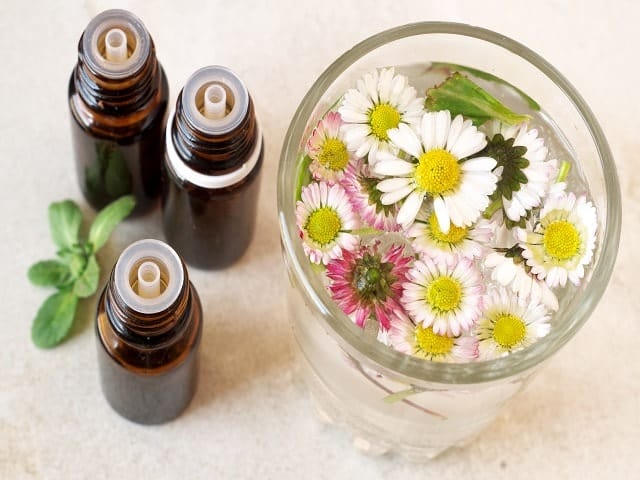
Aromatherapy Remedies
Diabetes can affect all parts of the body one way or the other. Essential oils can be used to reduce the side effects of some complications (ulcers, loss of skin integrity) and to reduce infections that often take longer to resolve than in non-diabetic patients. Helpful, are essential oils such as Cypress, Eucalyptus, Geranium, Ginger, Hyssop, Lavender, Peppermint and Rosemary. One common problem is that the legs become cold and numb at times and there is pain when walking. A foot bath works wonders for this condition. Also, massaging the feet, legs, hands and arms all help in regulating circulation.
Eucalyptus this pungent woody and spicy oil helps to stimulate circulation.
Ginger This incredible warming oil has a spicy scent and is very therapeutic.
Lavender This oil is an amazing therapeutic oil. Stimulates new cell growth, lifts depression, calms nerves, fights infection, reduces inflammation, and eases congestion. Relieves pain and muscle spasm. Lowers blood pressure.
Peppermint relieves pain, muscle spasms, reduces inflammation, fights infection, clears congestion, helps in digestion, and promotes good nerve health.
Rosemary Stimulates the adrenal glands, circulatory system, liver, gallbladder, promotes nerve health, improves the functioning of the heart and nervous system. It is a great oil for muscle spasms and eases digestive orders. Warning: This oil may trigger epileptic seizures in prone individuals, may irritate sensitive skin. Avoid if you have high blood pressure.
Hydrotherapy
The mysterious and amazing healing power of water has been utilized for centuries. Water cleanses, refreshes and restores all life. We are always drawn to water. Be it a soothing fountain or majestic waterfall. Water is a carrier. It flows. It moves along the line of least resistance to find its way to the ocean where comes and goes in the ebb and flow of tides and waves. The appeal is inexplicable! We crave water, maybe because our bodies are made up of a large percent of it. Maybe because we instinctively know how it can heal us.
Hydrotherapy is the use of water in any form, in the treatment of dis-ease.
Hydrotherapy has a number of uses. Warm water will relax spasm; thus, hydrotherapy has been useful in treating such conditions as muscular strains and sprains, muscular fatigue, and backache. Heat is often used in conjunction with massage or other manipulative or stimulative treatments, such as the whirlpool bath. Sitz baths (sitting in hot water) are effective in the treatment of many disorders. Water is also useful in physical therapy because patients who exercise in a buoyant medium can move weak parts of their bodies without contending with the strong force of gravity.
A warm water enema helps to clean the rectum of accumulated fecal matter. This is not only the safest system for cleaning the bowels, but also improves the peristaltic movement of the bowels and thereby relieves constipation. A cold water enema is helpful in inflammatory conditions of the colon, especially in cases of dysentery, diarrhea, ulcerative colitis, hemorrhoids and fever. A hot water enema is beneficial in relieving irritation due to inflammation of the rectum.
For a relaxing bath, as the tub fills with water add 2 spoons of
Angel’s Mist Deep Soak Sea Salts to the bath water for a soothing, tension relieving soak. Submerging as much of your body as possible, stay in the bath for at least 20 minutes, adding water as needed to maintain the temperature of the bath. End with a cool to cold shower.
An abdominal compress helps those suffering from gastritis, hyper-acidity, indigestion, jaundice, constipation, diarrhea, dysentery and other ailments relating to the abdominal organs.
Exercise
Aerobic exercise seems to be the single most important way that adult-onset diabetics can control their disease, even more important than diet. Thirty minutes of daily aerobic activity may prevent onset of the disease in those at risk and may cause complete disappearance of symptoms in those who have it.
Weight loss is the number one priority. Eighty percent of Type II diabetics are overweight. They tend to live a sedentary life and eat a lot. Obesity may obliterate insulin receptors so sugar can’t enter the cells and remains in your blood. If you’re overweight, diet and exercise will almost certainly help you lose some weight and get your blood sugar back to normal, and that may be all you need. Sometimes, all you have to lose is 5 to 10 pounds and it will make all the difference.
The benefits of regular exercise for everybody, diabetic or not, are well recognized. But diabetics have even more reason to get their arms and legs moving and their hearts pumping. Exercise strengthens the heartbeat, helps control blood sugar levels, and increases circulation to the body’s extremities.
Exercise can cut the level of cholesterol and triglycerides while raising the level of high-density lipoproteins (the “good” cholesterol that protects against heart disease). It helps you control your weight, increases your stamina, and lets you sleep more soundly.
Regular exercise has been shown to have beneficial effects on mood, especially for depression.
There’s also some evidence that exercise increases the number of insulin receptors on cell surfaces, which means insulin can find a place to put glucose where it’s needed inside the cells. In fact, to a person with diabetes, exercise is like a dose of insulin. Repetitive, rhythmic movements involving your large muscles arms and legs are best for diabetics. That means walking, jogging, swimming, rowing, or bicycling. You have to exercise regularly and at least four times a week for 20 to 30 minutes. Your doctor may even prescribe exercise five to seven times a week. Studies show that even a two or three day layoffs from exercise reverses its beneficial effects in diabetics.
The second best exercise, next to aerobic activity, is brisk walking. It’s the safest, least stressful, and most productive of all exercises. It improves the efficiency of every unit of insulin taken in or produced by the body. That means you get more effectiveness out of every grain of food you eat than you would without exercise. It also gives you a great sense of well-being and requires no equipment. If you walk a mile a day, burning 100 calories, in a year you’d shed more than 10 pounds.
Check with your doctor. If your diabetes isn’t under control or you have complications, high blood pressure, that also needs to be controlled first. Your doctor may want you to take a stress test. He’ll want to judge the effects of any medication you’re taking.
Homeopathy
This medical system uses infinitesimal doses of natural substances to stimulate a person’s immune system and body’s natural defenses. Homeopathic remedies are named for the plant or animal ingredients they are made from. Homeopathy not only offers relief from temporary disorders but, can provide long term healing of a person due to its individual and “holistic” approach. This often leads to a complete recovery from the dis-ease, as well as, providing an improved understanding of the patient’s situation. This type of healing makes it easier and possible to avoid recurrence or relapses in the future and homeopathy stimulates the body’s natural defense system by re-establishing normal immune system and cell function.
Silicea People with a diagnosis of diabetes respond best to a team approach. The team should include a qualified homeopath, a dietician, and monitoring by a medical doctor. To help your body achieve optimum results from medical treatment, take homeopathic Silicea. Diabetics receiving constitutional homeopathic care often require lower doses of drug therapy.
Lycopodium 30X twice a day, can relieve the pain and tightness from swollen ankles.
Magnesium Phosphoricum 30x also called “Mag Phos” can help with nighttime leg cramps or “charley horses,” which can be caused by a calcium or magnesium deficiency, or may be related to poor circulation. This can bring quick relief with a few doses taken five or ten minutes apart.

The Full Spectrum Diet
As a Nationally Certified Herbalist and Licensed practitioner of Acupuncture and Chinese Medicine, Andrew Pacholyk, MS, L.Ac. has spent years developing a natural healthcare plan, which incorporates the benefits of fresh, full spectrum foods based on their color and their properties. A balance of attractive colors in the foods you eat, play an instinctual part as to what the body needs in the moment. The color energy of fruits, vegetables, vitamins and minerals all come into play when furnishing your body with the proper nourishment.
This easy to use system monitors healthy weight by the colors of food on your plate!
The Full Spectrum Diet is based on the proponents of color therapy and the holistic principles of eating mindfully, eating to nourish the body and seeing food in a more natural and spiritual way. Meals rich with different colored fruits, vegetables, meat, chicken, fish and whole grains means you are getting a healthy variety of nutrients that your body needs.
It is a simple way to eat healthy in order to achieve healthy results! Want to know more?
Traditional Chinese Medicine
Traditional Chinese Medicine (TCM) is the oldest, continually practiced, and professionally administered health care system in the world. It is a documented medical system spanning over 2,500 years based on comprehensive philosophies, rational theories, clinically tested and empirically verified by over 100 generations of highly educated practitioners. Chinese Medicine is a total system of internal medicine which is comprised of a diagnostic procedure based on signs, symptoms and treatment styles including acupuncture, herbal medicine, exercise, diet and meditation. It’s foundation is based on the principles of balance; the interdependent relationship of Yin and Yang. Through this balance, health is achieved and maintained.
According to Traditional Chinese Medicine, an imbalance of energy or Qi in a particular meridian or organ system can cause physical, mental, and emotional symptoms. When emotions are held on to over long periods of time, or when they result from a particularly stressful or traumatic event, they can become causes of illness. Emotions also can result from an imbalanced flow of Qi or blood. Therefore, emotions can be the cause or the symptom of a disorder.
In Chinese Medicine, diabetes is considered to be a condition of disharmony in the body called Wasting and Thirsting Syndrome. Diabetics can often experience symptoms of severe thirst and hunger while losing weight.
Acupuncture and herbal medicine can be an effective complement to your diabetes treatments. Acupuncture redirects your Qi or vital energy into a more balanced flow. It provides support to the underlying energetic spheres affected by poor digestion and lack of movement. Acupuncture releases tension in the muscles. This allows increased flow of blood, lymph, and nerve impulses to affected areas, decreasing the stress experienced by you. Diabetics often have nerve pain or uncomfortable nerve sensations that can be alleviated with acupuncture.
The specific course of herbal treatment depends on the pattern and severity of your symptoms. Herbs are use to alleviate nerve tingling or pain. Research done in China has shown herbs such as Mai Men Dong, Tian Hua Fen, Bittermelon, (momordica charantia) and Rehmannia can potentially stimulate regeneration of cells in the Islets of Langerhans in the pancreas. These pancreas cells are responsible for the proper production of insulin, and the proper processing of blood sugar in the body. Many of the herbs work best when combined into a synergizing formula.
Visit Your TCM practitioner for a proper diagnosis and treatment or call Andrew at 917 843 3623 to schedule an appointment.

Cinnamon and Diabetes
Cinnamon (Gui Zhi) is one of the oldest remedies, prescribed for everything from diarrhea and chills to influenza and parasitic worms. Cinnamon comes from the bark of a small Southeast Asian evergreen tree and is available as an oil, extract, or dried powder. Based on the results of one preliminary double-blind, placebo-controlled study, cinnamon has been widely advertised as an effective treatment for type 2 diabetes as well as high cholesterol.
Other commonly used herbs include astragalus and wild yam root are used together in formulas to improve blood circulation, regulate blood glucose levels and stimulate healing.
Visit Your TCM practitioner for a proper diagnosis and treatment.
Ayurveda
The principle medical system of India is known as Ayurveda and is over 5,000 years old. This “Science of Life” is considered the art of living in harmony with nature. Developed from the ancient text of The Vedas, Ayurveda views the human body as a “homunculus” of our cosmic Universe, regulated by the balance between three primordial humours, call Dosha.
Your dosha are your Ayurveda mind and body type. There are three doshas in Ayurveda: Vata, Pitta, and Kapha. We each have all three of the doshas in our physiology, just in different proportions, so your dosha is unique and personal; it is like your fingerprint.
An imbalance in Vata results in the accumulation of toxins and improper digestion.
An imbalance of Pitta affects the blood and liver, increasing for inflammation.
An imbalance of Kapha, creates improper digestion, inflammation, and the over production of glucose which creates the perfect environment for the overgrowth of bacteria resulting in candida.
Digestive Health
Geared toward the health and well-being of each individual dosha. Maintains healthy digestive acid levels and a healthy stomach lining while supporting a comfortable post-meal experience. Consider Vata Digestion, Pitta Digestion or Kapha Digestion formulas.
Neem
Neem has traditionally been used to purify the blood, cleanse the liver and support the immune system. It is also commonly used to support healthy skin and to maintain healthy blood glucose levels. This very famous and popular herb is found whole, in powder, pills and oil.
Triphala
This combination of three fruits is one of the best bowel formulas in the world! Assists natural internal cleansing, Gently maintains regularity, nourishes and rejuvenates the tissues, supports healthy digestion and absorption and is a natural antioxidant.
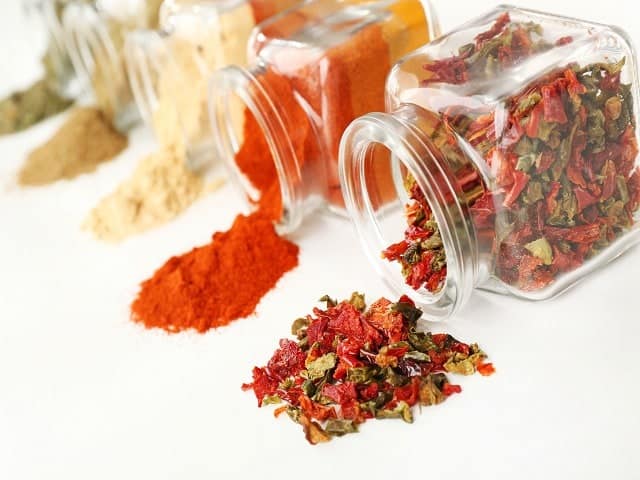
“Gymnema sylvestre”
- Supports a healthy digestive environment in the GI tract*
- Encourages proper fat and water metabolism*
Digestive Tea
Turmeric (Curcuma) is a plant and a staple in Indian cuisine and medicine. You probably know turmeric as the main spice in curry. Fennel Seed (Foeniculum vulgare) is a sweet, anise flavored digestive herb. Boil 5 cups of water in a covered saucepan and add 1/2 teaspoon each of turmeric and fennel seeds. Let this mixture steep for at least 10 minutes with the lid on. Strain out the seeds and pour liquid into teapot. Sip small amounts throughout the day and watch your skin begin to glow.
Emotional Aspect:
There is an emotional aspect to every illness. Often times, it is the emotional thoughts or “excess emotions” that will lead to illness. The following therapies are utilized for calming the mind, help with stress relief and focuses on our mental powers over any situation. The ability to balance your emotional, mental, physical and spiritual self are exceptional tools on your healing journey. Here are some suggestions:
Take back your health! You have the power to improve your health…and maintain control over your life.
- By making simple lifestyles changes: diet, exercise, how you think… you can retrain your mind and regain your freedom.
Embrace optimism and reform your old belief system. Our attitudes and beliefs create our mind/body structure.
- Giving up your power to dis-ease… is NOT an option.
The Building Blocks of Change
Change is inevitable and possible.
Our lives are made up of the building blocks of change. Change creates the person we must grow to be. Change happens for a reason. That reason is to allow us possibilities we may not have seen in the first place. This can be traumatic or it can be less so.
The single most important point you can make about change is that in most cases it’s not what faces you that’s the problem, it’s how you react to it.
Music As Therapy
Vibrational medicine, which validates that everything in the universe is in a state of vibration and the frequency at which an object or person most naturally vibrates is called resonance. The chakras, bones, and organs in the body all possess a different resonant frequency. When an organ or part of the body is vibrating out of tune or non-harmoniously, it is called “dis ease” or disease. A body is in a healthy state of being when each cell, each organ creates a resonance that is in harmony with the whole being.
Music is a powerful tool that can be used in so many ways. It has been proven that the type of music that makes a person relax or become receptive is not any one kind. It all depends on the individual and their affinity with it.
Metaphysical Thoughts
The power of your mind and your belief system has everything to do with the condition, the speed and the way that you heal.
* Our Belief System is one of the major factors that can get us through situations or can cause our life to crumble around us! I do believe that there is a lot of innate goodness and balancing our minds do subconsciously to get us through hard times. The other portion of this is how we “program” ourselves to deal with any given situation.
* Our self-confidence and self-love are often the key to opening and strengthening this portion of our thoughts which in turn emanates from ourselves!
* Energy follows thought. Program thought to be positive and your energy will reflect it!
* Really appreciating what we DO have as opposed to what we would like to have, sometimes makes a significant difference. This is always an important element in healing that is often neglected.
- Get up, Get going, Get motivated… “Today, I am going to change my life”.
- What is your belief system? Does it serve you well? Program thoughts to be positive, proactive and motivating and the Universe will do the rest!
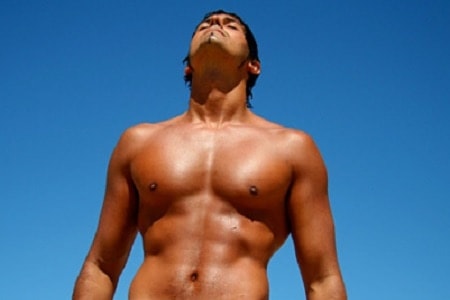
Yoga Breath
Sit with your legs crossed in a comfortable position. Breathe slowly and evenly from your diaphragm, through your nose. Fill your lower abdomen, lungs, then chest with air. Hold for a four count then slowly exhale the air out from your chest, lungs, then lower abdomen. Repeat 3 or 4 times. That’s it! Just allow your shoulders to drop and your face relax as you breath, deep.
Also consider Breath Exercises, Cat and Cow, Lying Down or Seated Twist, Bridge and Downward Facing Dog, Fish Pose and Child’s Pose.
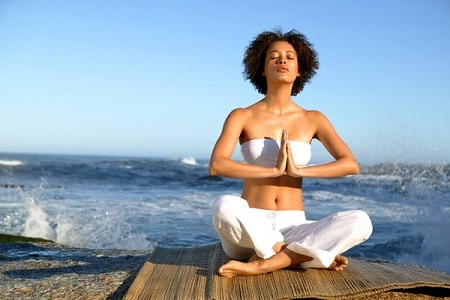
Tummy Meditation
Meditation will calm an agitated mind (and stomach), By creating optimal physical and mental health, this can undo our sense of separateness, which is the common root of fear and misery.
Meditation unifies our consciousness, putting us in touch with our higher self and connect us to higher consciousness. Meditation restructures the mind, allowing us to achieve our full potential as human beings.

Color Therapy
Orange – In using orange — you can learn to understand how the stomach tells us about our physical situations. If the Spleen Chakra is out of balance, our stomach is usually the first thing to warn us.
Yellow – In using yellow — it has a powerful effect on the nervous system and assists the left brain in operation. The Solar Plexus Chakra – when it is balanced we should not suffer from ulcers, gall stones, catarrh of the large intestine or diabetes.

Psychotherapy
Diabetes-related psychological problems are categories as: 1) having difficulties coping (more common) and 2) diagnosable psychological disorders (more challenging).
Psychological problems to watch out for are depression, anxiety disorder, denial, anger, fear, and stress. These complications tend to last longer, feel worse, and recur more often.
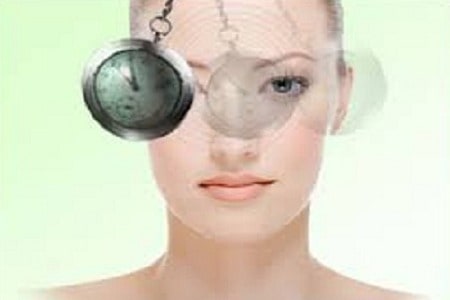
Hypnotherapy
Your mind is an untapped source of amazing power. If you change your mind, you must change your life. Hypnosis has now become widely recognized as the smartest and easiest method we can employ to change our life. Hypnosis for diabetes can help with controlling stress, facing our fears and creating an altered state of consciousness. Hypnosis will change your inner mind to help you change your ideas and images about food and how you eat. Contact Andrew for a local Hypnotherapist. ([email protected])

Guided Imagery
Do Visualization: See yourself in a comfortable and balanced state, by changing your mental behavior. Reward Yourself Differently: Reprogram your brain to find comfort in people and positive social actions. Use Imagery To Obtain Self Awareness: Become in tune with your feeling. Discover who YOU are and what satisfies you or dissatisfies you.
The power of visualization and guided imagery is one of our most powerful gifts! A healing tool we all have with in us – the “power of the mind!” Learning how to do Guided Imagery has many benefits. Guided Imagery helps us to develop our imagination as a healing tool. The premise is to use “Mind Medicine” to connect the mind and body in order to free ourselves from pain due to ANY Medical Condition. This concept allows us to deepen our abilities to fully relax, quiet the mental chatter, create restful sleep and invite a positive and productive thought process. Learn more about how guided imagery can work for you!
Crystal Reference
Let’s be clear. Crystals are not going to healing your diabetes. BUT, they are great as meditation tools and tools for directing your intention to your purpose. There are a large variety of “tools” made available to you for bringing about awareness and change.
All you have to do is pay attention.
Crystals have both piezoelectric and pyroelectric properties. This means that the polarities of the crystal will change when subjected to pressure or heat (even body heat from the hands). This will radiate energy from the crystal due to this reversal of polarities. It provides the transfer, storage and transformation of energy.
Offering a balanced energy field, energy modification, amplifies both energy and thought, clarity in thinking, and harmony and alignment with the chakra energy areas.
The Complete Chakra Kit stimulates the seven main energy sources which govern all the major organs and psychologically alters and clears the body’s energy in order to allow healing to take place.
Crystal Medicine Pouches are based on the Native American Medicine Pouches, each suede pouch comes with several crystals, sage for cleansing negativity and the best way to use, cleanse and energize them in order to get what you want out of life!!
Crystal Empowerment Pouches are individually filled with several crystals to strengthen and enhance the best energy for each situation. Each suede pouch comes with several crystals and best way to use, cleanse and energize them in order to get what you want out of life!!
Crystal Elixirs are wonderfully scented oils come in .05 ounce roll-on bottles and contain genuine crystals in vibrationally compatible essential oil blends. They are fantastic for Chakra work, energy healing, as an Aura Balancer, as a balancing perfume oil or simply as a “refresher” for your Gem Potpourri. Crystal Elixir oil blends are used externally.
Gem Essence are the infusion of crystals, spring water and the power of the sun/moon in a bottle! These essence work in harmony with the body by interacting with our bio-sheath and are natural and self-adjusting. When crystals are activated by natural sunlight, they transfer their vibrational signature into water, creating a remedy that is safe, effective and used in conjunction with all modalities of healing. Gem Essence waters can be used internally.
The Body Crystalstm: Stone massage is a popular form of relaxation dating back thousands of years. The Body Crystals are tools used to deliver deep relaxation, helping with detoxification, melting tension and reducing pain. Learn more about these amazing stones!
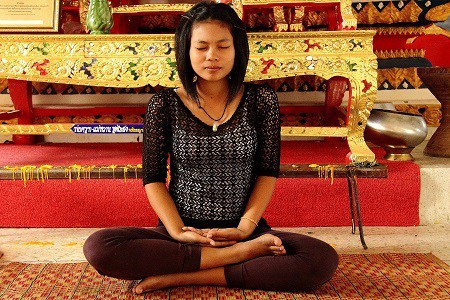
Meditation & Crystals
Meditation won’t necessarily get rid of your acne, BUT, it will alleviate much of the angst and anxiety associated with it! Calming the mind and central nervous system have a direct affect on how our body “vibrates” and how we choose to handle stress as it comes at us. The more you meditate, the more able you become in handling difficult situations!
~ Use a crystal of your choice or one mentioned. Sit comfortable on the floor and hold your stone or lie down and place the crystal on your Third Eye or Solar Plexus.
~ Close your eyes. Take several deep breaths. Feel the crystal rise and fall as you slowly inhale/exhale. Allow your body to melt into the floor at each breath. Take this time to find your center. Let go of those things which hold you back. With each inhale, take in that which you deserve. With each exhale, release all that tension.
~ When you feel more calm and connected, slowly open your eyes. Give yourself some time to recover. You may even want to journal about your experience.
Crystal Associations
Allowing emotions to be expressed is the goal with crystal therapy. Crystals to consider for diabetes: Agate Stone, Opal, Serpentine.

Study Energy Medicine at Home
The Peacefulmind.com Homestudy Courses make it possible for anyone to study energy medicine at home, on your time! These certifications programs are offered by the National Association of Holistic Wellness
*Transitions: The Transformational Guide and Workbook for Creating Great Health This is the culmination of years of Andrew Pacholyk, MS, L.Ac. clinical work. This is a manual you can use, whether you are healthy or ill or somewhere in between and you want to re-balance your mind, body and spirit to become the whole person you can be! This workbook gives you a plan to take care of yourself. It can be used over and over to find balance and keep yourself as healthy as possible. It gives you “tools” to use when and where you need them. It helps to evaluate where you are in your journey and offers ways to get you exactly where you want to be! Want to know more?
*The “Color Elite” Color Therapy Certification Course Andrew Pacholyk, MS, L.Ac. has finally published his most complete healing course using the power of color and light therapy. This ultimate guide to chromotherapy teaches you about color and every aspect of it, how it is used in different therapeutic settings and how it has become such a great healing modality, no matter what profession you are in you will learn how to incorporate color into your daily life! Want to know more?
*The Crystal Light Crystal Therapy Course This incredible course is our biggest and most popular course on the internet! This is the study of crystals and how to heal with earth’s precious gems! Want to know more?
*Chakracology – A Workbook and Manual This workbook format allows you to look at the energy of the Chakra and how they affect us on a daily basis. The book allows you to work through each center on a mental, spiritual, as well as a physical level and then find ways to re-align, balance and manage your energy in a positive way! Want to know more?
*The Healing Art of Touch – Massage Therapy Homestudy Learn the art of touch and massage therapy through Andrew’s very extensive course. Complete anatomy lessons, varied techniques and amazing information is offered in this course. Also learn the business aspects of massage, how to cope with clients that are difficult and energy transference are just a few of the many topics covered! Want to know more?
*What’s Your Heart Telling You? Finding Love and Romance – The Workbook and Journal Andrew Pacholyk, MS, L.Ac. has now published his newest work based on years of personal intimacy, clinical experience, counseling and client research on the ways to navigate love, sex, romance and relationships in a modern day world. Andrew has devised this very thorough workbook and journal with questionnaires, exercises, quotes, tips, meditations, feng shui, aromatherapy, massage and herbal applications for creating the perfect scenario for finding, coping and keeping love in your life! Want to know more?
*The Feng Shui Journal The Peacefulmind.com Feng Shui Journal makes it possible for you to improve relationships, maximize career potential and enhance your environment! * We are honored to offer the Feng Shui Journal for beginner to advanced Feng Shui practitioners. This journal covers an extensive background on Feng Shui techniques history, usage, clearing, cleansing, manifesting and helpful information in order to bring balance back into your life! Want to know more?
What are your experiences with digestive health?
Sharing your own experiences often helps others. We’d love to know in the Peacefulmind Community.

